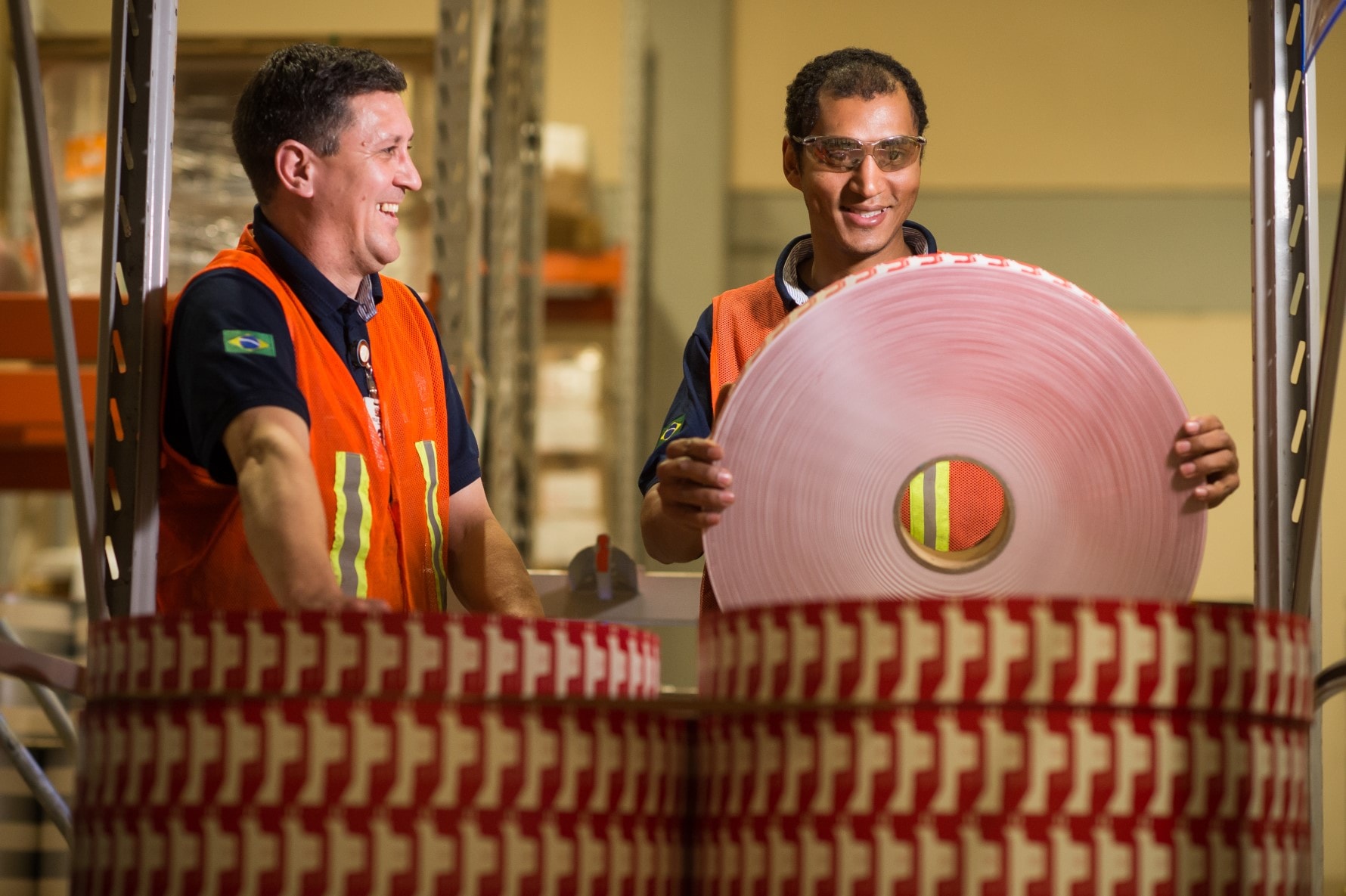Sustainability touches every aspect of our planet – and our value chain. With PMI products sold in more than 180 markets, there are opportunities for our business to create long term value, while minimizing the negative externalities associated with our products, operations and supply chain. For our sustainability work to have meaning and impact, it must focus on addressing the issues that matter most to our stakeholders.
And to keep pace with their evolving expectations, we refreshed our sustainability materiality assessment at the end of 2019 to help us further refine the development of our 2025 sustainability strategy. This led to a refinement of the four key pillars within our sustainability strategy, which support our vision for a smoke-free future.
The four pillars now include:
- Innovating for better products
- Operating with excellence
- Caring for the people we work with
- Protecting the environment
They reflect the issues or opportunities where we think we can have the greatest impact on society. We are committed to implementing impactful programs to achieve the ambitious objectives we’ve set in each of these areas, and we will report our performance on an annual basis.
Our affiliates are also working to bring our sustainability efforts to life. While the entire company is committed to our global sustainability strategy, the activities carried out at the affiliate level must be tailored to our local footprint for context to be truly impactful. As such, in 2019, some affiliates conducted local sustainability materiality assessments to define the main issues to focus on.
In 2020, we focused on implementing the results of the assessment and new strategy across our business functions and affiliates. We plan to conduct a new comprehensive sustainability materiality assessment in 2021. This will allow us to reassess, recalibrate, and reaffirm our goals. We will communicate the findings in our next report.
To read about how PMI conducted an updated assessment of our sustainability priorities, download our 2019 Sustainability Materiality Report here, or click on the link below.
How we define, and continually refine, our sustainability priorities
Since 2018, BSD Consulting has assisted us in carrying out our analysis, providing independent expertise and guidance on alignment with reporting frameworks. With their help, we followed a four-step process to determine our sustainability priorities.
Step 1: We identified the most relevant topics.
In 2018, our sustainability materiality assessment outlined environmental, social and governance topics that were potentially relevant for us. When researching sustainability topics that are likely to be relevant to PMI, we consider the impacts of our business across our value chain. The topics were generated from PMI’s own documentation as well as analyses of public health debates, investor requirements, media reports, sustainability standards and frameworks such as the Global Reporting Initiative (GRI) and the United Nations’ Sustainable Development Goals (SDGs).
For the 2019 sustainability materiality report, these topics were revised and refined to enhance clarity and reflect stakeholders’ evolving expectations. It considered the internal and external feedback gathered during the 2018 exercise, as well as developments in the aforementioned data that helped shape previous topics.
Step 2: We listened to our stakeholders.
Stakeholder engagement is a key component of our materiality assessment. To gain insight from stakeholders about what sustainability issues they considered as top priority, or as gaining momentum, we conducted a two-part online survey, which generated 823 responses across 60 countries. The first set of questions asked participants to prioritize the topics by importance, while the second set consisted of open questions allowing for qualitative inputs.
Of those surveyed, 66 percent were internal stakeholders and 34 percent were external (e.g., suppliers, civil society and the business community). Some findings from our survey were:
- Participants were encouraged by PMI’s sustainability progress and believe it’s rightly targeted.
- There was a need to evolve our focus on product eco-design and circularity, climate protection, and water stewardship.
- PMI needed to further communicate on its sustainability work and set clear targets and performance indicators to allow the tracking of progress.
Step 3: We assessed the potential for impact on society.
A desktop assessment was conducted to understand which topics have the most impact on sustainable development, and where they fall within PMI’s value chain. Our third-party experts analyzed the significance of each topic’s environmental, social, and economic impacts on society at the different stages of the value chain: the upstream stage (e.g., tobacco growers, suppliers), the operations stage, and the downstream stage (e.g., consumers, retailers). The likeliness, reversibility, and severity of these impacts were considered in this evaluation.
Complementing the desktop assessment from our consultants, subject matter experts from PMI were also consulted during the assessment process. The assessment highlighted priority topics PMI should address. These included product health impacts, sustainable supply-chain management, and the socioeconomic wellbeing of tobacco farming communities.
Step 4: We built and validated our sustainability materiality matrix.
Using stakeholders’ perspectives gathered from the survey and the impact assessment, PMI generated a sustainability materiality matrix in line with the Global Reporting Initiative’s (GRI) requirements. This allowed us to rank the topics into two categories: tier one and tier two.
Within this, we mapped the topics to the four pillars of our sustainability strategy (outlined above), highlighting those that stakeholders mentioned would likely gain momentum.
In this article and in related communications, the terms “materiality”, “material”, and similar terms, when used in the context of economic, environmental, and social topics, are defined in the referenced sustainability standards and are not meant to correspond to the concept of materiality under the U.S. securities laws and/or disclosures required by the U.S. Securities and Exchange Commission.
